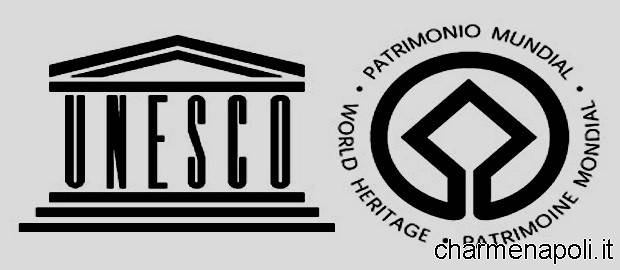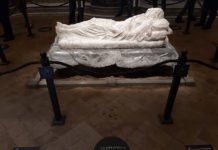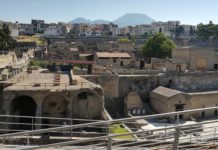An update of the Declaration of Exceptional Value World by the World Heritage Committee has extended its protection to other seven places in the city on the Gulf. Let’s see what they are doing a mini-tour of the new citizen precious made in Naples. Let’s start from the Royal Palace and the Royal Wood of Capodimonte, favors the era of Bourbon, and jewelry lying on the green slopes of the hill of Naples. We then go on to another hill where reigns, that vomerese, the Castel Satn’Elmo, fortress of the Middle Ages to the end of 1200 the stone sentinel, from a height of 250 m asl, is partly cut into the tufa rock , and always protects and watches looking straight into the face of the sea and also the Vesuvius.[charme-gallery]
Right next to the castle there is another site promoted by the World, the Certosa di San Martino. What is today a museum of high standard, has been erected in the middle of 1300, and is one of the most successful in the city of Baroque art and architecture. Staying on the hill but leaning out the other side of the sea, no choice has been made the Park and the Floridiana. Her story says that in June 1815 King Ferdinand IV of Bourbon bought it for his wife Lucia Migliaccio, Duchess of Floridia and this was dedicated to her calling Floridiana. Over the years, the real expanded the property with its buildings became the example of neoclassicism and where, however, the park expresses a romantic style. Plant took care of the then director of the Botanical Garden of Naples Friedrich Dehnhardt which adorned the park with 150 species of plants, including oaks, pines, plane trees, palm trees, boxwoods and a rich collection of camellias. And taking a cue from this, the other assumed a world-class location is just the Royal Botanical Garden, one of the largest parks dedicated to the flora ever seen. The hotel opened its doors in 1811 and today has an area of 12 hectares and is home to about 9,000 plant species and nearly 25,000 plant specimens. Incredible is not it?[charme-gallery]
From the Royal Garden, in what is now Via Foria, we head towards the sea, and we arrive at the Villa Comunale, no choice high excellence. Of this, we know that its original construction dates back to the late seventeenth century, when the viceroy Duke of Medinaceli, thinking about a “green promenade” that the Porta Reale is pushed up to the Neapolitan Crypt, had planted a double row of trees embellishing them with the installation of 13 fountains. In 1778-80 onwards, thanks to the intervention of Ferdinand IV of Bourbon, the whole area was transformed into a real public park on the same lines of what Charles III of Bourbon, father of the King of Naples, had made the Salon the Paseo del Prado in Madrid. To this day, continues to be the protagonist of city life being a fundamental part of the urban waterfront. From the Riviera di Chiaia we bring you the last time the site chosen by UNESCO and we do it this time climbing the hill of Posillipo, where the interest of the institution world born in November 1946 in Paris, is laying on Villa Rosebery, that wonderful residence known by the Neapolitans as the “villa of the president.” In fact, today the structure is one of the three goods in Italy at the disposal of the Head of State for use of representation. Short is his story, as the complex was founded in the early 1800s and is an example of neoclassicism in Naples. This property through various properties including, however, the last reference to Lord Rosebery, British statesman. He ordered that his death a gift to the British government, which, however, after having benefited for several years as a residence for its ambassadors, gave it a turn, and finally, to Italy in 1932 who used it as a summer residence of the royal families. Enough to enjoy in short, for these “promotions”, but we must at the same time was a nightmare to try to continue and raggiungerne new.

 Italiano
Italiano














